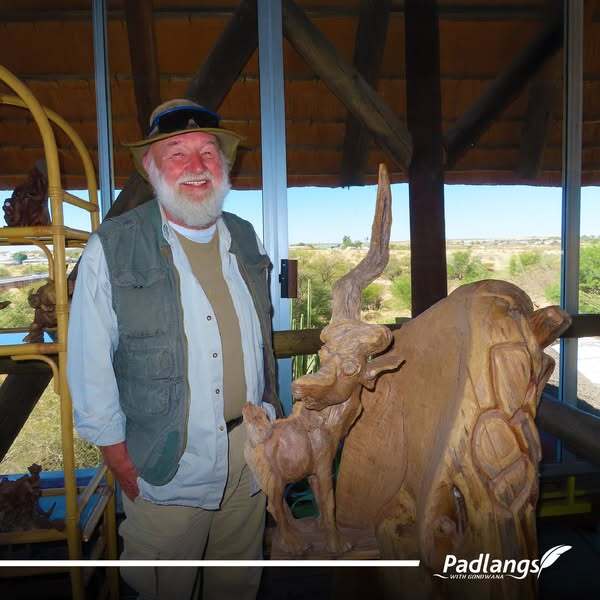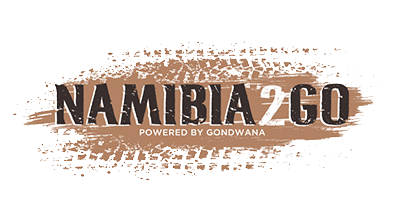The small town of Omaruru in central Namibia is the home of Tikoloshe root carvings, the ephemeral Omararu River and excellent Namibian wines. It also has some other interesting roots, which few people are aware of.
Jose Loch, the young and unlikely curator of the Omaruru museum, is passionate about telling the town’s story. Although Khoisan pastoralists travelled through the area from early days, the recorded history of the settlement began in the mid to late 1880s.

Our story begins then. Although there is little trace left today, at the time the Swedes were the leading traders and largest foreign group in the country. Charles John Andersson, an explorer and trader, established the trading post at Otjimbingwe in the 1860s. After his death in 1867, a new trading centre was started in Omaruru by countrymen Axel Eriksson with Anders Ohlsson and Thure Een. Around this time, Herero chief, Christian Wilhelm Zeraua, moved from Otjimbingwe and made his home on the southern side of the river, allocating the northern side for the Swedish traders and missionaries. And, as Jose informed me, there were several of them, beginning with Daniel Kloete in 1868, followed by Rev Gottlieb Viehe, who built the mission house and the Evangelical-Lutheran church across the street.
The museum is housed in the 1871 mission house. And whatever the old building lacks in display material, Jose filled in with words. Story after story unfolded as we walked through the simple house built with sunbaked bricks that have stood the test of time.
Other relics from the past in the town are the old German buildings from the early 1900s and the Franke Tower in Dr Scheepers Road. It dates back to 1904 when during the German-Herero war Captain Victor Franke, commander of the Omararu Company, broke through a ring of Herero soldiers who had besieged the town. I wandered around the well-built structure. A pearl-spotted owl watched me from a tree before flying off into the late afternoon sky.

Although Omararu’s history is fascinating, I was more interested in the present-day roots. The next day, after the francolins welcomed the morning, I popped in to Tikoloshe Afrika, the first stop after you cross the (usually dry) Omaruru River as you enter the town on its southern side. Ndingi Ndumba, Albertu Kambinda and Lino Kativo were sitting outside the shop carving mopane roots.
Over a good cup of coffee, owner Paul Goldbach told me how he came across his first root carvings in 1981 in Peru when he saw the work of Augustin Rivas Vasquez. A furrier by trade from the small town of Hann.Münden near Kassel in Germany, Paul had come to the country in 1970, answering an advertisement for a furrier that his father had seen in the newspaper. A year later he was in Windhoek.
He changed professions over the years, working as a fitter in Ruacana and the Rossing mine, and then as a farm manager. It was here that he met Kavango woodcarver, Paulus Kachinga, and encouraged him to try root carving rather than traditional carving. Paul’s interest in root carvings grew and he recruited more carvers. Eventually, the owner of the farm told him that he needed to spend more time tending the cattle and less time carving roots. This inspired Paul to move to Omaruru and focus solely on root carving. He brought a rundown building at the edge of town in 1995, renovated it and opened the shop selling carvings and curios.
I asked him about the creative pieces. “The root shows what’s already inside,” he told me. “We can’t do better than nature.” Every root is different and every piece is unique.” He encourages the carvers to look at the root and see what animal they can see in the weatherworn wood. The results are the exceptional sculptures that have a movement, spirit and life of their own.

After talking to Paul and still buzzing on coffee, I went to explore the rest of the town, named ‘Omaruru’ the Otjiherero word for bitter-milk, presumably produced after the cattle had nibbled bitter bush, which comes up quickly after the rains. A lot had changed since my last visit ten years earlier. Of course there had been the Covid years, but much of the change had been caused by a long drought in the area, which affected the wineries and the vegetable production that Omaruru was known for. Thankfully, at the beginning of the year, after good summer rainfall, the river flowed properly for the first time in eight years and continued to hold water for a few months, recharging the underground aquifer.
Namibia’s first winery, Kristell Kellerei on Dr Scheepers Road, now focuses on its Gin and liqueurs distilled at their Naute Dam distillery. They offer tastings and cheese/meat platter lunches on their sprawling veranda, a good way to enjoy midday on the outskirts of Omaruru, surrounded by bush. While the special Namibian ingredient in their NamGin and NamRum is Devil’s Claw, the Erongo Mountain Winery on the opposite side of town makes use of other local ingredients. The secret of their superb range of wines is oak barrels. Their Ondjaba (elephant in Oshiwambo) whiskies hold a different secret. They not only include the northern Namibian staple ‘mahangu’ (pearl millet) as an ingredient, but are produced using elephant dung! I asked waiter/salesperson Protasius Jeremia about it. He said, “This is the story of the poo,” as he took me on a walk through the winery. Brought in from the nearby Omaruru Game Lodge, the elephant dung, which is more like tobacco or grass, is used to smoke the grain, a sustainable substitute for peat, adding to the whiskey’s unique taste. The winery offers tours and tastings, and delicious lunches with a view of the Erongo Mountains in the distance.
Back in town, the Ongwari Cafe’s garden setting attracted me for its relaxed atmosphere and menu of freshly-squeezed juices, home-baked bread, breakfasts and lunches.
The longer I spent in the town, the more I discovered. And I was just getting started. The sun was dipping in the sky and the coast was calling. I would be back.
As I drove out of Omaruru, passing Tikoloshe carvings and crossing the life-giving river, I realised that Omaruru had changed and that change is an inevitable part of the cycle of life, even in a small town, or especially in a small town. As some things end, others begin. For Omaruru, the puddles in the river were a promising sign that foretold many new beginnings for the place of roots, wine and stories.


.png)
.jpg)
.jpg)




.png)

SUBMIT YOUR COMMENT